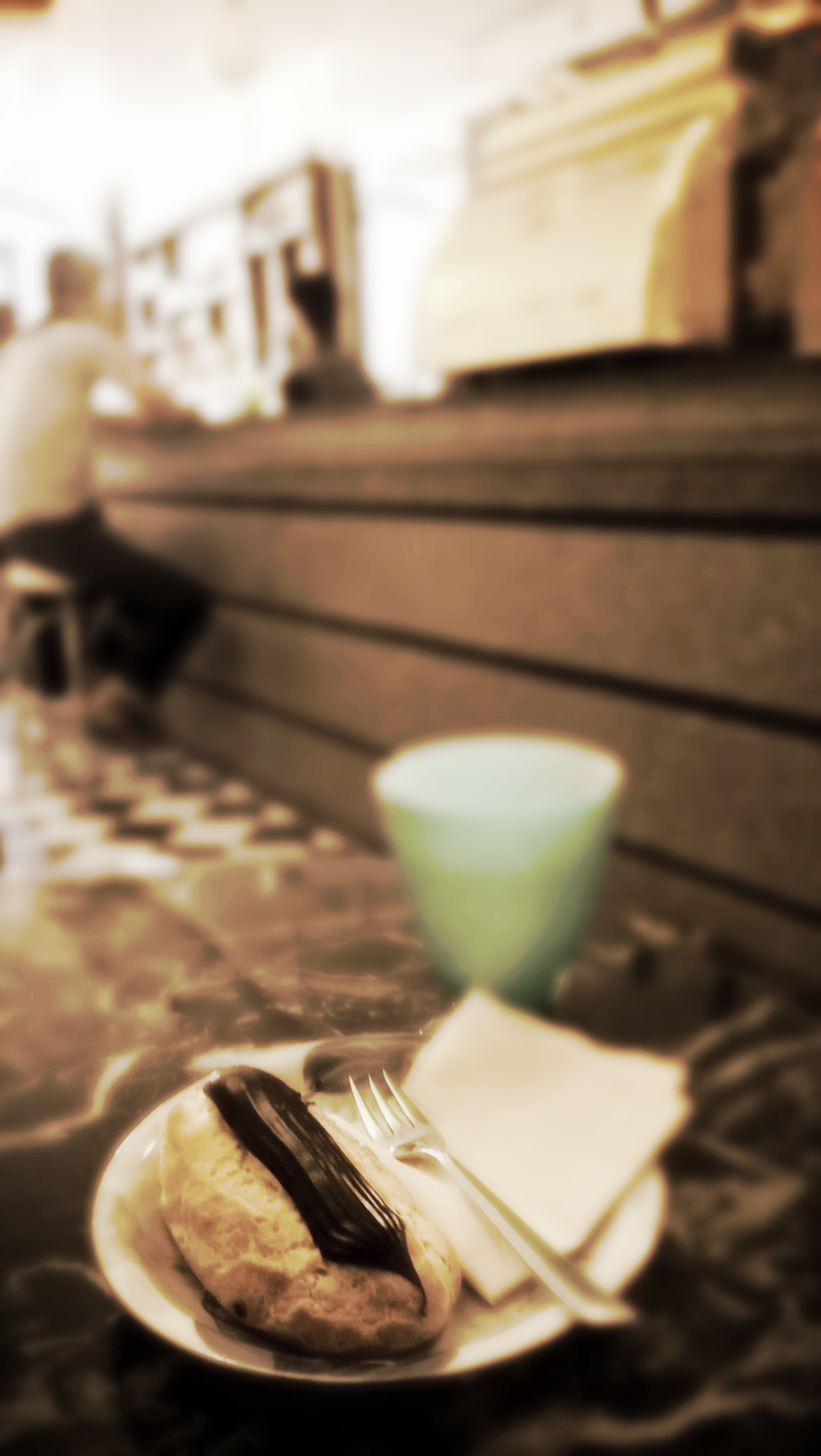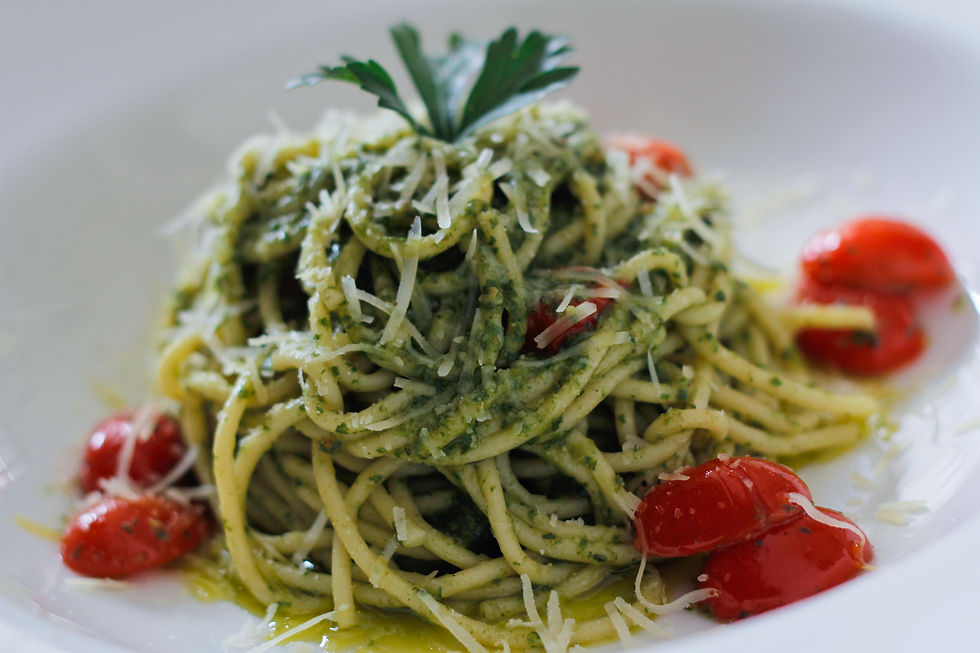There's more to Vientiane than meets the eye...and it all looks good to eat
I don't know why people rubbish Vientiane. Sure it's got bad roads and is 12 hours by bus from, well, pretty much anywhere, but there are pretty fairy lights at night (maybe to make up for the lack of street lights), broad avenues, a nice night market by the river, good food....I like it a lot. As far as Asian cities go it's probably the least like one - quiet, safe, not particularly crowded and only one shopping mall...okay, it's a bit hokey when it comes to tourist attractions but it doesn't sell itself as a tourist town. At best it's a transit hub for tourists and the rest actually have a life here.
Maybe it's the transient nature of cities that allows their food to be influenced by passers-by without being taken over by them. This fusion gives the sense they are onto something new and willing to experiment. Laos, a communist country that's popular with Western tourists, sits at the cross roads of dissimilar asian nations, so the influences come in all directions.
It's capital, Vientiane, not only a city of foodies but also of artists, performers and reformers, is a one of those places that people can try something new and people marvel rather than mock. Like when they put the escalator in the mall. They only had 3 floors but why not? It's the country's only shopping mall and Laos' only escalator. They are yet to get a food court but you can snack on Laos street food including crickets and bugs just outside. I went beyond the market mall, past main streets down alleys and into pavilions on a five day food affair.
1. The Laos Food Festival
An unprecedented week of freezing rain has finally stopped and people are going out for dinner again. The end of the rain also neatly coincided with the annual food festival in a lucky break for them.
So what's on the show?
Cafes, restaurants and wholesalers line up in a street vendor style atmosphere at the end of the night market. Colourful doughnuts made from choux pastry, river weed harvested from the Mekong, perfectly identical squid on a bbq, samplers of traditional food. Its a cacophony of colour, aromas and imagination. Organic is big in Laos. This landlocked river bound country of largely subsistence farmers has been kind of isolated both to pesticides and mass agriculture markets. But lends itself to the modern concept of organic farming and is emerging into the international market when organic is on trend. Sometimes things just work out.
2. Lao French Fusion
What a cool little place this is. The staff are sweet, if a bit clutzy, and the French owner is playing Claire de Lune on an old beat-up piano. This place has a feeling of old Vientiane about it with its vintage decor, Lao table covers and Moulin Rouge wall colour. Something old, something Lao, something French and fusing it into something new. Along this street are some slick modern establishments, Japanese and Italian mostly, with modern decor and menus that could put me in any city anywhere but this little tucked away grabbed my attention.
Like the French, the Lao are masters of simplistic complexity in food. An energetic combination of strong flavours that somehow work subtly in the mouth. Laap, one of their traditional foods, is minced meat (or Tofu for us vegetarians) mixed quickly in a wok with generous proportions of finely chopped spring onion, chilli, coriander, mint, ginger, galangal, and lime. It's eaten with sticky rice using your fingers. Take a ball of rice, squash the laap into the rice and pop it in your mouth. Sticky rice is an absolute staple in this country and is preferred over standard white rice. The stickiness doesn't just come from the way it is prepared but in the kind of grain that's grown. When other rice-growing countries changed to a less glutinous variety of rice, Laos stuck with tradition and made it their own. They eat more sticky rice than any other nation and call themselves "luk khao niaow" or "the children of sticky rice".
3. The Bagette, the Croissant & the Éclair

There's no denying the French left their influence behind in Lao in the bakeries. With the anti-colonial fervour of the ruling Communist party you'd think they'd have well and truly stomped on the croissant and banished the baguette. But they probably realised a good thing when they were on it.
Although that depends on who you ask. My cooking teacher, an avowed Laotian foodie, denied the Lao even eat bread. "It's made for tourists," she said. Maybe not in Vientiane where Laotian owned cafes are full of croissant eating Lao. In fact, at the Hipster CoCo&Co, they only have one croissant left and have run out of brie. Luckily, the chocolate mouse filled éclairs are to die for.
4. The Italian job
It seems a bit incongruous to be sitting in a shiny modern Italian restaurant with operetta playing while a Lao tuk-tuk driver is out the front changing a wheel. But if you think about it, it's not really that big a culture shock. Marco Polo was probably sitting in a restaurant with a rickshaw out the front when he decided to bring noodles back to Italy and call it spaghetti. And China isn't too far from here. Only 12 hrs on a bus.
Giuseppe, who I met on an under 12hr but bumpy bus ride from Vang Vieng, refused to even come to the Italian strip. He's been continuously disappointed by Italian food overseas. I was disappointed by Italian food in Italy, so I guess it is what you are used to.
I'm used to Sicilian home cooking because it's the Sicilians who came to Australia and defined our idea of Italian food. It's been refined over the years and has become a staple in any Australian home. It was for me at any rate. As a kid my aunt's Spaghetti Bolognese was one of the few foods I'd happily eat. Now I'm veg, it is pesto that rules. This one is so-so. I've had better, but I've also certainly had worse. The coconut gelato, though, is the star of the show. Bellissimo!

5. Tamil: the new cooks on the block

More surprising than the Western food influences are the Indian. It's more than 12 hours to the subcontinent but paratha vendors somehow found themselves here.
Vientiane hosts more than 90% of Laos Muslim community with a mosque, halal restaurants and a small Tamil population that happens to be near the tourist strip.
For 10,000 kip, just over 1USD, you get yourself a few slices of heaven from the street vendor. The guy starts with a ball of dough half the size of his fist and with several quick, whirling throws it's as thin as filo and a foot in diameter. Just as quickly, he slices banana, drizzles a swirling stream of honey, folds the whole thing up into a square package and tosses it into the frying pan. His father flips it around a few times and tosses it to mother who cuts and bags it.
"I'm not even hungry," the guy next to me says, "but it's going to be so good."
And it is. Oh! banana paratha, where have you been all my life?



